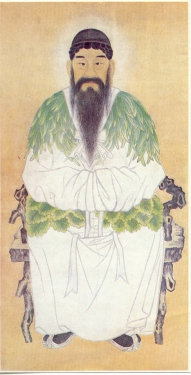<Picture from Google>
This is a founding story of Korea and plays an important role to keep the identity of Korea. Dangun’s story is in an old Korean history book called “The stories of three kingdoms” written in 1281. The story is following this. “There was Hwanung, a son of a heavenly god who was interested in governing the Human world. He came down to the earth with three gods, three marks of kings, and 3000 followers. The three gods were a god of rain, a god of clouds, and a god of wind. All are related to agriculture. It is not clear yet what the three marks are. Hwanung built a town called Sinsi (a city of god) and governed it. A tiger and a bear lived near by the city of god and they wanted to human and live there. So they prayed to a heavenly god to transform them into humans. Hwanung heard their prayers and appeared in front of them. Hwanung gave them 20 mystical cloves of garlic and a bundle of mugwort while instructing them that if they ate only these vegetables and avoided sunshine for 100 days, they would become human. The tiger gave up after 20 days but the bear accomplished the task. So the bear became a woman named Ungnyo, or a bearwoman. After she became a human, she wanted to have a baby so she prayed for it to Hwanung under a sacred tree. Hwanung answered her wish by becoming a man so he could marry her. Ungnyo had a baby and gave birth under the sacred tree. Dangun is that baby. The name Dangun means a man of a birch tree. Dangun established Gojoseon, the ancient kingdom of Korea. He governed it for 1500 years before he went to a mountain becoming an immortal god.
The story of Dangun tells us that Korean people originated from the combination of two tribes: A tribe worshiped the heavenly God, Hwanung and a tribe that worshiped the bear. Recently Chinese government excavated a remains from the New Stone Age in Manzuria area, northern China. The remains contains the symbols of Bear Totem. Since then, some South Korean historians have urged the story of Dangun is a real history. Also according to Mongolian scholars and some Korean scholars, the story of Hwanung is related to the Epic of King Geser, the founder of Mongolia and Tibet. So the origin of the Korean people could go much beyond the Korean peninsula.




